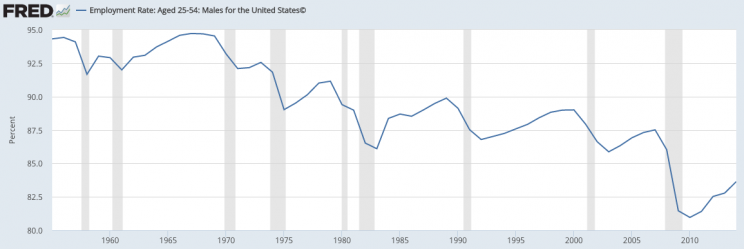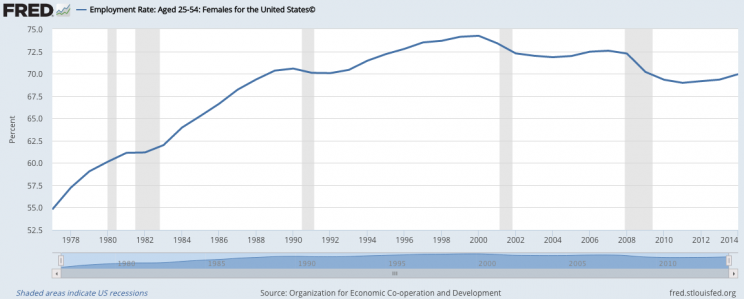These men have become a huge drag on the economy
Meet the new welfare kings.
There are maybe 9 million of them, they’re men, they don’t work and they don’t want to. They spend as much time every year gazing at TV, videos and the Internet as working people spend on the job. And they’re a big reason the US economy has lapsed into a period of slow growth, stagnant wages and widespread unease.
That’s the upshot of a “Men Without Work: America’s Invisible Crisis,” a concise new book by Nicholas Eberstadt, a scholar at the American Enterprise Institute. “It’s a 50-year trend,” Eberstadt tells Yahoo Finance in the video above. “There’s no good news here, I’m afraid.”
Eberstadt points to consistent declines in the percentage of working-age men who have a job or are looking for one, which is how the labor force is defined. The so-called employment-rate for men aged 25-54 was 94% in 1965. Today, it’s 84%. Were that figure still at 1965 levels, it would add up to roughly 10 million additional working men, when population growth is factored in.

About 1 million of those are adult men who are in school, preparing for a life of work. They’re viewed as people who will be actively engaged in the workforce and the economy at some point in the future. But the other 9 million are people receiving some kind of disability insurance, living off family members or otherwise cobbling together a living without a job.
Time-use surveys show they’re far less engaged in society than people who work. “They pretty much don’t do civil society,” says Eberstadt. “They don’t do charitable work. They don’t do volunteering or religious organizations. They’re not helping much with childcare, not much helping around the house.” What they do spend their time on is visual entertainment, averaging 2,000 hours per year in front of screens. That chunk of time is equivalent to a full-time job.
There’s no single reason for the proliferation of these workless men. Women have become a much bigger part of the labor force during the last 50 years, but that doesn’t mean they’ve been taking jobs from men. A better explanation might be that some men have a spouse who’s able to bring home an income, easing the pressure for them to do so.

The demise of many manufacturing jobs has left some men with the choice of working for pay they feel is substandard, in menial service jobs, or not working at all. Unions have become less powerful and less able to protect jobs that can be offshored to other countries, and done more cheaply there. Another contributor: There are also millions of felons no longer behind bars whose criminal record makes it hard to get hired, especially with online background checks becoming easy and cheap. Drug testing, now routine at many companies, may further discourage people who believe they’d test positive.
Millions of families are suffering because a male earner has given up working. But the whole economy suffers, as well. “The collapse of work for men means slower economic growth,” Eberstadt explains, “wider economic gaps, wider wealth gaps, more government dependence, a bigger budget deficit, more public debt, more fragile families, less social mobility, weaker civil society.” Yep. Depressing.
What to do? First, Eberstadt suggests, come up with new ways to give convicted felons better job prospects once they’re released from prison. Revitalize small business, something politicians always claim as a priority but don’t usually do much about. And reform the disability system so there’s less abuse and more emphasis on participants getting healthy and going back to work. The next president, no doubt, will get right on it.
Rick Newman is the author of four books, including Rebounders: How Winners Pivot from Setback to Success. Follow him on Twitter: @rickjnewman.

